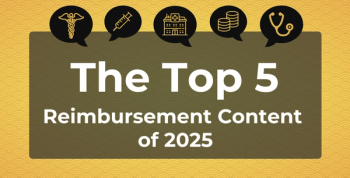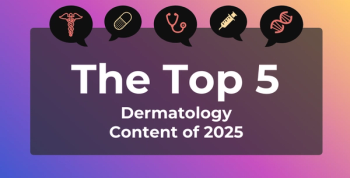
Novel Orexin 2 Receptor Agonist Shows Promise for Management of Narcolepsy and Idiopathic Hypersomnia
Brendon Yee, PhD, professor and respiratory and sleep physician, Woolcock Institute of Medical Research, discusses the success of ALKS 2680, an investigational oral selective orexin 2 receptor agonist.
Results from a phase 1b trial demonstrate promise for a novel treatment developed to address the needs of patients with
These findings and more were presented at the European Sleep Research Society’s Congress, Sleep Europe 2024, held in Seville, Spain, from September 24-27.
The American Journal of Managed Care® (AJMC®): How does ALKS 2680 work at the molecular level to improve wakefulness in patients with NT2 and IH, and how does it differ from other available treatments?
Yee: ALKS 2680 has a novel mechanism. It targets the orexin 2 receptors, and we know that the orexin pathway is very important in terms of maintaining wakefulness. So other treatment that we currently have for narcolepsy or idiopathic hypersomnia do not target that pathway, and they probably target more downstream pathways from the orexin—and we tend to think of the orexin pathway as the main coordinator. In terms of outcomes, we are only up to phase 1/2 studies, but looking at the maintenance of wakefulness test, which is probably one of our better objective markers of how people can sustain wakefulness during the day, the study suggests that the improvement in maintenance of wakefulness test is quite impressive compared with traditional treatments of narcolepsy or idiopathic hypersomnia.
Although there hasn't been a head-to-head trial comparing these new orexin receptor 2 agonists and traditional treatments, but if you see the response compared with placebo between the different treatment classes, you can see that orexin 2 agonists are much more impressive so far.
AJMC: Were there any noticeable differences in the efficacy of ALKS 2680 between patients with NT2 and those with IH? If so, what might explain these differences?
Yee: The data that we've presented so far at Sleep Europe have only been from a phase 1b proof-of-concept study. So at a single dose, it makes it hard to make long-term conclusions. But we know that in patients with narcolepsy type 1 (NT1), where there is orexin deficiency, meaning that if you measure orexin levels in the cerebrospinal fluid in patients with NT1, it's very, very low or nonexistent vs NT2.
In patients with idiopathic hypersomnolence, where they have relatively normal orexin levels in their cerebrospinal fluid, we know that there are differences in terms of dosage. So the dosage used in NT1 tends to be smaller or lower than patients with NT2 and idiopathic hypersomnolence. But despite that, there were still marked improvements in the subjective and objective outcomes, particularly the maintenance of wakefulness test. However, the improvements in the patients with NT1 were with lower doses.
AJMC: What were the most common AEs observed during the study, and how does the safety profile of ALKS 2680 compare to existing treatment options for these conditions?
Yee: Overall, we had no dropouts from the phase 1b trial. And we tested this on NT2 and IH. There was no severe or significant adverse event, but they did have some minor or mild adverse effects, particularly with the higher doses. And these included things like polyuria, which is the urge to go to the toilet and urinate, and also probably a little bit of insomnia. There was 1 person who had a little bit of blurred vision, which was transient. So these side effects were mild. They were transient, and they didn't require any medical intervention, per se.
Now, how does this compare to previous published data? And I guess you've probably read that there are some early proof-of-concept studies with intravenous orexin agonists, and the Takeda product that was published in the New England Journal of Medicine, where polyuria was a known effect.1 So I guess, you know, these are things that we've seen. Are they different from what's been published in the Takeda products? Probably not, and I guess it's finding the correct dose for the phase 2/3 studies. As you know, the pharma company will move on with these other trials. But there's so much promising data from the phase 1b study that obviously the phase 2 and phase 3 studies are going to get happening right now. There are no significant abnormal biochemistry or lab abnormalities, EKG [electrocardiogram] abnormalities, or cardiovascular outcomes of concern so far.
AJMC: How do you anticipate ALKS 2680's effects on wakefulness will hold up over longer-term use, and are there plans for further studies to evaluate its efficacy and safety over extended periods?
Yee: ALKS 2680 is promising based on the phase 1b proof-of-concept data that have been presented so far. They are going on to a phase 2 and almost certainly a phase 3 study. The phase 2 study in NT1 and NT2 is currently happening in the US and Australia, currently recruiting patients, and this is going to be a longer-term study of 3 months and more of a dose-finding trial. Other companies have probably slightly more developed products, and the fact that Takeda has a product which is going to phase 3—currently recruiting now—is very promising.
Presentation of phase 2 data recently suggests that the effects of these medications are sustained over a period of time. So don't think at this stage there's evidence that there is tolerance to these medications, and the effect in terms of maintaining wakefulness seems to be quite sustained. So these seem like very, very promising treatments, and the efficacy shown on the maintenance of wakefulness tests and other outcomes suggest that these may be the treatments of choice in the very near future, once the safety and long-term studies have been completed.
Reference
1. Dauvilliers Y, Mignot E, Del Río Villegas R, et al. Oral orexin receptor 2 agonist in narcolepsy type 1. N Engl J Med. 2023;389(4):309-321. doi:10.1056/NEJMoa2301940
Newsletter
Stay ahead of policy, cost, and value—subscribe to AJMC for expert insights at the intersection of clinical care and health economics.








